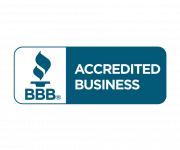Facebook is constantly evolving the way businesses can use their platform for long-term success in the marketplace. For the longest time, social media managers conducted their strategies with “likes,” “comments,” and “shares,” in mind for how successful a particular post or groups of posts were performing as part of a campaign. Based on those metrics, which are still a good indicator of how your content is being perceived by your audience, you would then, as the business owner, be given a report as to how people interacted with you on Facebook.
Now, with the conversion pixels provided by the good people at Facebook, you are able to do so much more with your campaigns to track not only how your posts are performing, but also where people are going after they interact with a given post. This type of “conversion” shows that you’re leading people to a dedicated Landing Page you’ve created on your site and also where they travel after they’ve reached the destination you’ve provided for them. This type of measurement can help you optimize ads you place on Facebook and also measure the ROI on your investment in your campaign – and ultimately your social media manager.
There are 4 steps to utilizing the conversion pixels:
1) Create a Pixel
2) Adding the Facebook Pixel to your Website
3) Use the Pixel for Ad Optimization
4) Measure Conversions
For a more detailed look at each step, take a look at the link directly from Facebook HERE
All social media strategies revolve around stimulating a community of people who you can then convert to customers after they’ve engaged with your social media content. For small to medium sized businesses looking to compete on such a vast platform like Facebook, you’ll need to keep your pennies working harder for you then some of the larger corporations who are on the same platform. Knowing just how costly it is, or in terms of success how cost-effective it is, to convert people to your website will help you connect with your clientele in ways that were at one time unimaginable.
With traditional advertising for example, you measured the effectiveness of your newspaper ads by how many phone calls you got. By factoring in those calls and dividing your ad spend by them, you could then have a decent indicator of how it worked. With Facebook conversion pixels, you’ll know exactly what it costs to get people to your site and into your sales cycle. Judging by your price models, you may see a significant spike in conversions that will ultimately be less expensive in the long run to more traditional models.
Following these steps and adding Conversion Pixels to your website can make the difference in helping you make tweaks to campaigns that may be floundering, or they could provide you with the confidence to keep pushing in the same direction if your posts and ads are succeeding. Once instituted correctly, you’ll be able to know to the penny how effective your Facebook strategy is in turning eyeballs to dollars in your pocket. For any sized business using social media, the goal of maximum ROI is there from day one.





